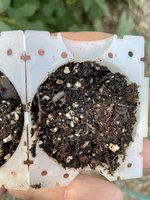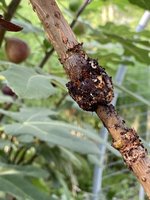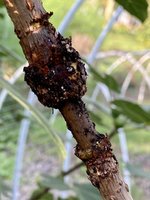Gr8tfuldad
Chumono
So I opened up one of my air layers on my elderberry and discovered two different types of insects in a air layer. 1 Rolly Polly and 1 pincher. The air layer did not have any roots, but there was lots of swelling and bulging as if it tried. After 8 weeks I would have thought there would be something starting as they root very easy. Do you think they ate any roots that started to form? Sorry no pictures it’s dark out, the neighbors think I’m strange enough without going out there with a flashlight to take a picture right now 



